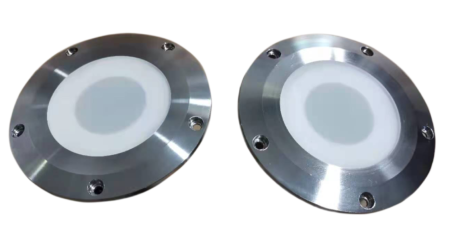How a Luminaire’s Lifetime Efficiency Is Affected
Generally, when considering LED luminaires, the focus is on energy efficiency. The primary selection criterion is efficacy, and thus the power consumption. However, are you concerned with the luminaire’s lifespan? What if the luminaire with higher efficacy has a lower lifespan? This means that the luminaires may need to be replaced significantly more frequently. This increases expenses and depletes the electricity bill savings.
LED Light Source Durability
In comparison to traditional light sources, an LED light source has a long life. When the life of a conventional incandescent bulb or fluorescent tube has expired, they can no longer be used. It will either become dark or will begin to flicker. LEDs lose only a fraction of their light over time and are theoretically infinite.
This is why the life expectancy of LED light sources is assessed differently than it is for conventional light sources. A conventional light source’s lifetime is literal. The lifetime of an LED indicates when the light output falls below the desired level.
LED Lifetime is defined as:
- L70, L80, and LXX indicate the percentage of original lumens remaining. For instance, L70 indicates that the light source retains 70% of its former lumen output. Thus, if the initial output of the light source was 1000lm, it has decreased to 700lm.
- B50, B60, BXX = The number of light sources that have a lumen output less than the specified value. B50, for example, indicates that 50% of light sources are no longer producing the necessary number of lumens.
Typically, the lifespan is expressed as a sum of these two values. For example, L70B50: 60.000h indicates that 50% of light sources continue to produce at least 70% of their original lumens after 60.000 hours of operation.
Estimation of the life expectancy of an a LED module
Additionally, the lifetime can be expressed solely in terms of the L-value. For instance, the L70 has a life expectancy of 60.000 hours. The manufacturer then makes no guarantees about the percentage of luminaires that remain above 70% after 60.000 hours.
Considering the Longevity of Luminaires When Choosing
Assume you’re illuminating a 1,000-lumen room. Take a shop, for instance. You’ve whittled down your luminaire selection to two: Option A and Option B. The room is now lit with fluorescent lighting, specifically 58W T8 luminaires producing approximately 4000 lumens apiece. Your options include the following:
- Option A
4000 lumens Luminous Flux
o 150 lumens/W efficacy
o 26.7 W of power
o L70B50: 50 000 hours over the course of a lifetime
o Luminaire: 120€
- Option B
4000 lumens Luminous Flux
130 lm/W efficacy
- 30.8 watts
- L70B50: 90,000 hours over the course of its life
- 120€ for each luminaire
Choosing option A is simple. The usage of electricity is reduced by approximately 4 watts. For instance, if you have 1000 luminaires, this equates to 4kW and a significant reduction in your electricity consumption.
When daily operating hours are known, annual electricity usage may be calculated and compared to the previous approach. As an illustration, consider that your shop is open 14 hours every day. When cleaning and other administrative tasks are factored in, your daily operational hours increase to 16. In this case, at least.
Thus, the following mathematics is obtained:
- Annual operational hours: 16 hours multiplied by 365 equals 5840 hours per year
- Electricity at a cost of 0.1 euros per kilowatt-hour
- Historically accurate (58W Fluorescent)
o Annual energy consumption: 1000*58W*5840h = 338720000Wh = 338720kWh
- Electricity bill: 33 872.00€ 338720*0.1
Option A
o Annual electricity consumption: 1000 x 26.7 watts x 5840 hours = 155928000 watts x 155928 kilowatt-hours
o Monthly electric bill: 155928*0.1=15 592.80€
Option B
- Annual power consumption: 1000*30.8W*5840h=179872000Wh=179872kWh
- Monthly electric bill: 179872*0.1=17 987.20€
Both LED alternatives reduce your electricity bill by half compared to the previous solution, which results in significant cost savings. Option A saves somewhat more money due to its increased efficiency and reduced power use.
Option A is the preferable alternative in the short run. As a result of the annual savings. Annual savings are approximately 2.4k€ greater with Option A than with Option B.
However, it is quite uncommon for an investment of this magnitude to have a one-, two-, or even five-year horizon. That is why we need extend the time span in which we perform the calculations.
When we consider a person’s lifetime, the picture becomes slightly different.
Let us begin by determining the application’s lifetime. When daily operation hours are 16, the annual operation time is 5840h, as previously computed.
This enables us to simplify the concept of a lifetime:
- Alternative A:
50 000 hours/5840 hours equals 8.6 years
- Alternative B:
90 000 hours/5840 hours is 15.4 years
Thus, after eight years, you would need to replace option A, whereas option B would continue to illuminate your room for seven additional years (15 in total).
When we consider the overall amount of money saved as a result of the luminaires, we see the following:
Electricity bill savings as a result of luminaire replacement
(a) Indefinite (b) Indefinite (c) Indefinite (d) Indefinite (e) Indefinite
17 582.29 EUR 14 447.26 EUR 1 17 582.29 EUR
53 746.88 € 43 341.78 € 3 52 746.88 €
€ 72 236.31 € 5 87 911.47
€ 144 472.62 € 10 55 822.93 €
216 708,92 € 15 143 734.40 €
€ 168 945.23 € 20 111 645.87 €
As the numbers and graphic above demonstrate, option A is the more advantageous option in the short run. However, when investing for the long term, the longer lifetime of option B kicks in before the investment reaches a decade. You will need to replace option A nearly twice as frequently as you will need to replace option B.
Therefore, when considering a long-term investment, the lifespan becomes critical.
When selecting luminaires, you should consider their efficacy as well as their longevity. The more costly the luminaire and investment, the more critical the lifetime.





